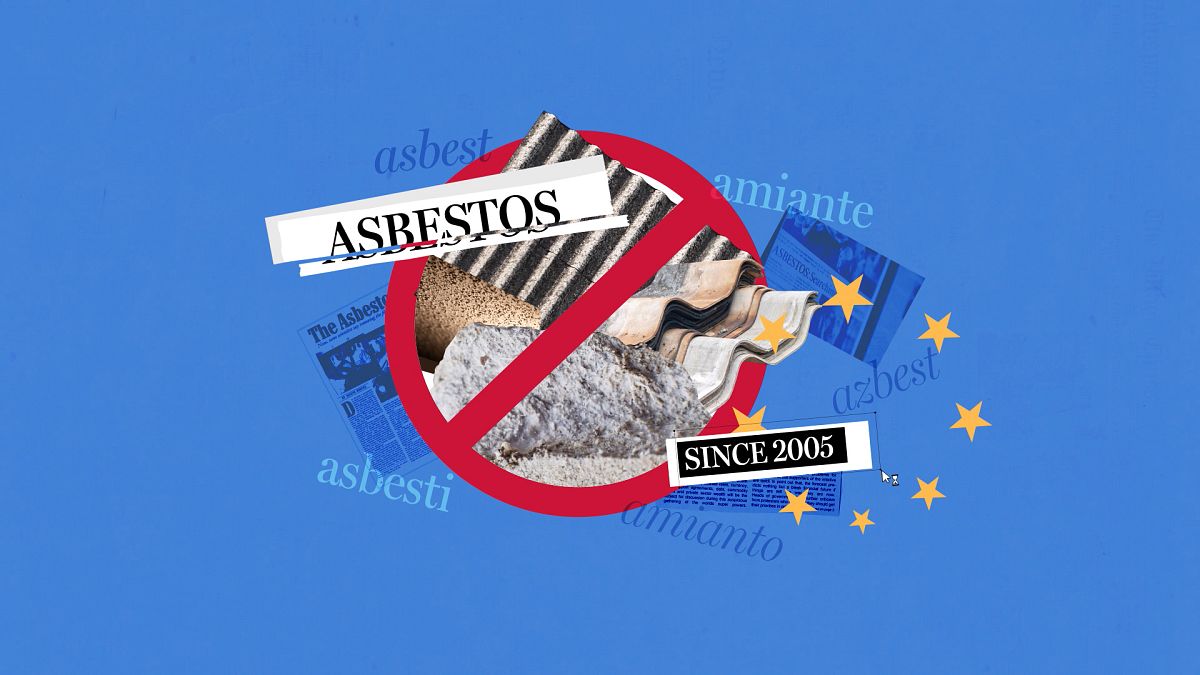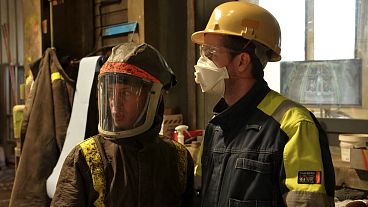The European Commission has set out measures to tackle the health risks from asbestos in six areas
Debt, inflation, wages, and jobs... We know that it's tricky to understand how the economy works. That's why every episode of Real Economy brings you a one-minute Crash Course to bring you quickly up to speed on the big picture. We explain the headline concepts and lay out how public policy is reacting to changing current affairs and economic trends. Watch your one-minute Crash Course in the video above.
Asbestos has been banned in the EU since 2005. However, it continues to kill.
- An estimated 78% of work-related cancer cases are linked to asbestos
- 70,000 people died from asbestos exposure in 2019
- Asbestos is still very widespread in Europe's homes and office buildings.
Addressing the health risks
Addressing the risks of exposure to asbestos is essential to protect people’s health.
The main threat occurs when materials that contain asbestos are disturbed and fibres are released in the air and inhaled, for example when old buildings are renovated.
Over 220 million building units were built before the ban. It is therefore likely that a significant part of today’s building stock contains asbestos.
And the new regulation is even more urgent given the EU’s ambition to double the annual rate of energy renovations of buildings by 2030, which are responsible for more than one-third of energy-related greenhouse gas emissions.
So the key measure the European Commission is proposing is to make the limit for asbestos exposure across the EU ten times lower.
The Commission wants to amend the Asbestos at Work Directive to reduce the occupational exposure limit for asbestos from 0.1 fibres per cubic centimetre (f/cm³) to 0.01f/cm³.
This would allow for a more uniform protection of workers across the EU on the basis of the latest scientific and technological developments. It's also intended to create a level playing field for businesses and prevent higher healthcare costs for medical treatment in the future.
Six areas of action
Reducing exposure limits is part of a wider programme that also aims to support asbestos victims and ensure asbestos is safely disposed of.
The Commission has set out measures to tackle the issue of asbestos in six areas:
1 - Providing EU financing support to Member States for better health prevention and treatment, as well as renovations and the safe removal of asbestos
2 - Supporting victims of asbestos-related diseases:
- consulting the tripartite Advisory Committee on Safety and Health at Work on including additional asbestos-related diseases as occupational diseases
- a proposed update to the Council Recommendation on cancer screening
- launching the European Cancer Imaging Initiative
3 - Protecting workers against exposure to asbestos:
- lowering the current occupational exposure limit to asbestos
- offering guidelines on implementation
- launching an awareness-raising campaign on the safe removal of asbestos aimed at companies, workers, owners and public administrations
4 - Addressing asbestos present in buildings:
- a legislative proposal on the screening and registration of asbestos in buildings
- developing national asbestos removal strategies
- introducing digital building logbooks
5 - Ensuring safe disposalof asbestos waste and zero pollution:
- revising the protocol and guidelines on construction and demolition waste management
- launching a study to identify asbestos waste management best practices
6 - Positioning the EU as a global leaderin the fight against asbestos, together with international partners.



